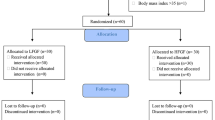Abstract
The use of sevoflurane in pediatric patients, which could enable a more rapid emergence and recovery, is complicated by a high incidence of postanesthetic agitation, probably due to residual sevoflurane during washout. The present study was designed to investigate whether administration of nitrous oxide (N2O) reduces sevoflurane concentration at awakening and suppresses postanesthetic agitation. The study enrolled 20 children classified as ASA physical status I. Anesthesia was induced with 5% sevoflurane and maintained with 2.5% end-tidal sevoflurane and N2O in oxygen. In the control group, sevoflurane and N2O were discontinued immediately after completion of surgery. In the N2O group, inspired N2O was replaced with oxygen after the bispectral index (BIS) had reached 80. The end-tidal concentrations of sevoflurane at awakening were significantly lower (P < 0.05) in the N2O group than in the control group. The BIS at awakening was higher (P < 0.01) in the N2O group than in the control group. The point scores of postanesthetic agitation were significantly lower (P < 0.01) in the N2O group than in the control group. Using N2O during washing out of sevoflurane may improve postanesthetic agitation at awakening in children.
Similar content being viewed by others
Author information
Authors and Affiliations
About this article
Cite this article
Shibata, S., Shigeomi, S., Sato, W. et al. Nitrous oxide administration during washout of sevoflurane improves postanesthetic agitation in children. J Anesth 19, 160–163 (2005). https://doi.org/10.1007/s00540-004-0294-9
Received:
Accepted:
Issue Date:
DOI: https://doi.org/10.1007/s00540-004-0294-9




